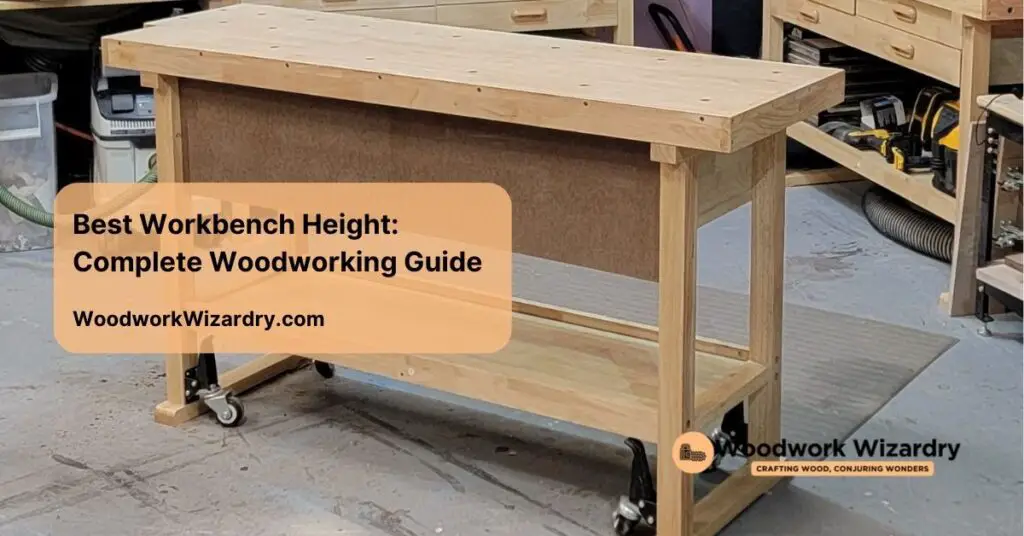Finding the perfect workbench height isn’t just about comfort—it’s the key to unlocking your woodworking potential. Whether you’re crafting intricate details or tackling heavy-duty projects, the right height can transform your workspace into a powerhouse of efficiency and precision. Too high or too low, and you risk strained muscles, poor craftsmanship, and wasted time.
Imagine a setup where every tool feels within reach, every cut feels natural, and your body thanks you at the end of the day. That’s what the ideal workbench height offers. This guide will help you discover the sweet spot customized to your needs, ensuring every project feels seamless and enjoyable. Ready to take your woodworking game to the next level? Let’s immerse.
Importance Of Choosing The Right Workbench Height
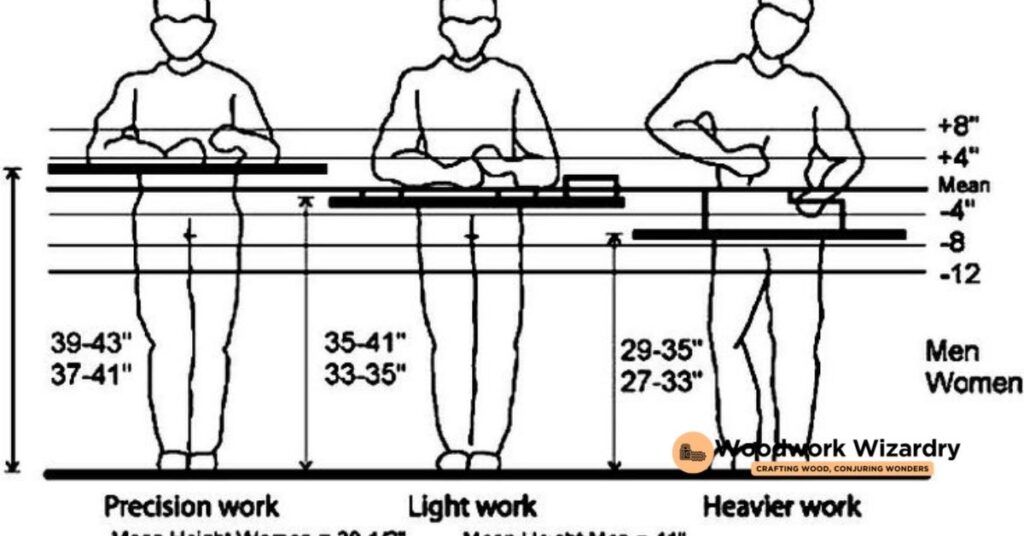
Selecting the correct workbench height is essential for an effective woodworking setup. It directly affects your productivity, physical health, and precision in crafting.
Impact On Comfort And Efficiency
A proper workbench height enhances your comfort during woodworking sessions. It minimizes the need for awkward body movements by keeping tools and surfaces within easy reach. The improved posture lets you focus energy on tasks rather than on compensating for discomfort. For instance, a taller individual may benefit from a higher bench, while shorter individuals might find lower heights more accessible.
Efficiency also increases when the bench height aligns with your tasks. Cutting or sanding is easier when your setup eliminates unnecessary strain. Precise work, such as dovetail joints, requires the bench to help a clear view of the workspace without bending.
Avoiding Long-Term Health Issues
An inappropriate workbench height can lead to gradual health problems. Sustained poor posture often contributes to back pain, strained neck muscles, and shoulder discomfort. Carpenters who strain their bodies tend to suffer work-related injuries over time.
The right height reduces the chance of repetitive strain injuries caused by unnatural wrist angles. Your arms and shoulders stay in a relaxed position when cutting, chiseling, or hammering if the bench height supports ergonomic alignment. Maintaining such alignment prevents chronic health issues from developing.
Factors To Consider For Ideal Workbench Height
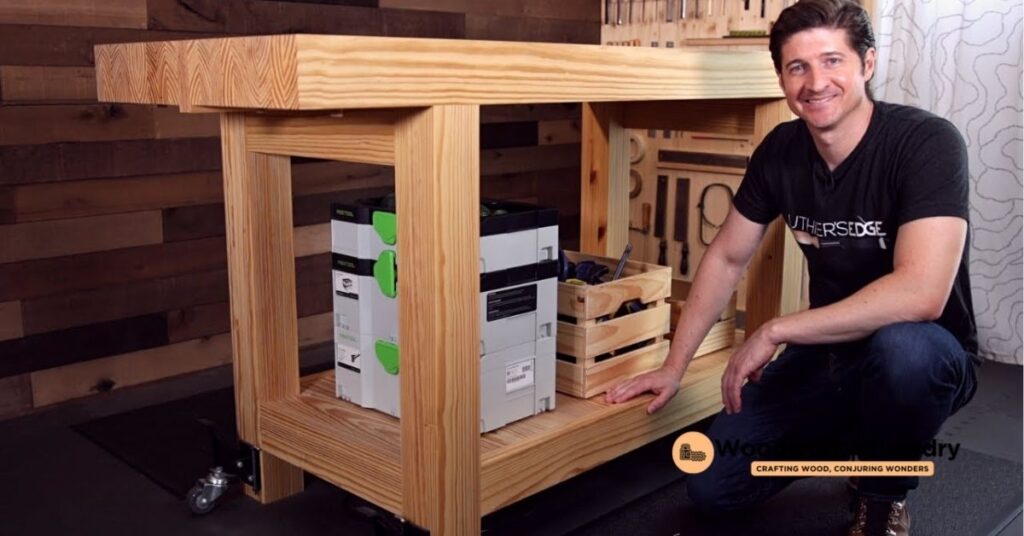
Selecting the right workbench height depends on multiple factors to ensure comfort, efficiency, and precision. Balance these considerations to create a workspace customized to your needs.
Type Of Woodworking Tasks
Different woodworking tasks benefit from varied workbench heights. For detailed work such as carving or sanding, a higher bench around 38-40 inches from the ground enables better visibility and control. Lower benches, typically between 30-34 inches, are ideal for heavy-duty tasks like planing or sawing, allowing you to apply greater downward force efficiently. Your primary woodworking activities should guide your bench height selection.
Body Height And Ergonomics
Your height significantly influences the optimal workbench height for maintaining proper posture. For an average individual, a bench height approximately at wrist level when arms hang naturally at your sides works best. For instance, someone 5’9″ tall might find a 36-inch bench comfortable. Taller or shorter individuals need custom height adjustments to avoid stooping or overstretching, which can cause discomfort or long-term physical strain. Ensuring ergonomic alignment reduces fatigue during extended woodworking sessions.
Adjustability Options
Adjustable workbenches offer flexibility, catering to multiple woodworking tasks and users of different heights. Benches with variable height mechanisms, such as crank systems or pneumatic lifters, adapt quickly to different needs. Fixed-height benches can be modified with risers or platforms if necessary, though adjustability remains the ideal choice for shared spaces or varied projects. Investing in adjustability enhances both versatility and long-term usability.
Recommended Workbench Heights For Different Tasks
Correct workbench height is essential for efficient and comfortable woodworking. Different tasks demand varying heights to ensure precision, ease, and reduced physical strain.
General Woodworking
Standard woodworking tasks, such as sanding and measuring, typically align well with a height of 34 to 36 inches. A level close to your hip joint offers optimal control over general tools and materials. For individuals with an average height of 5’9″, this range works comfortably. Adjust slightly up or down depending on your exact height and work preferences.
Carving And Detail Work
Detailed tasks like carving and fine joinery require a slightly higher workbench, usually 38 to 39 inches. An elevated surface brings small projects closer to eye level, reducing the need to hunch over. This height encourages better precision for intricate cuts and delicate adjustments. Use auxiliary tools, like a raised vice, if your main bench isn’t high enough.
Heavy-Duty Projects
For tasks involving heavy materials, such as cutting thick wood or planing large boards, a lower bench height of 30 to 32 inches is ideal. A reduced height maximizes leverage, making it easier to apply downward force without straining muscles. Select or build a bench that accommodates sturdy frameworks to handle the additional weight and pressure.
How To Measure And Customize Your Workbench Height
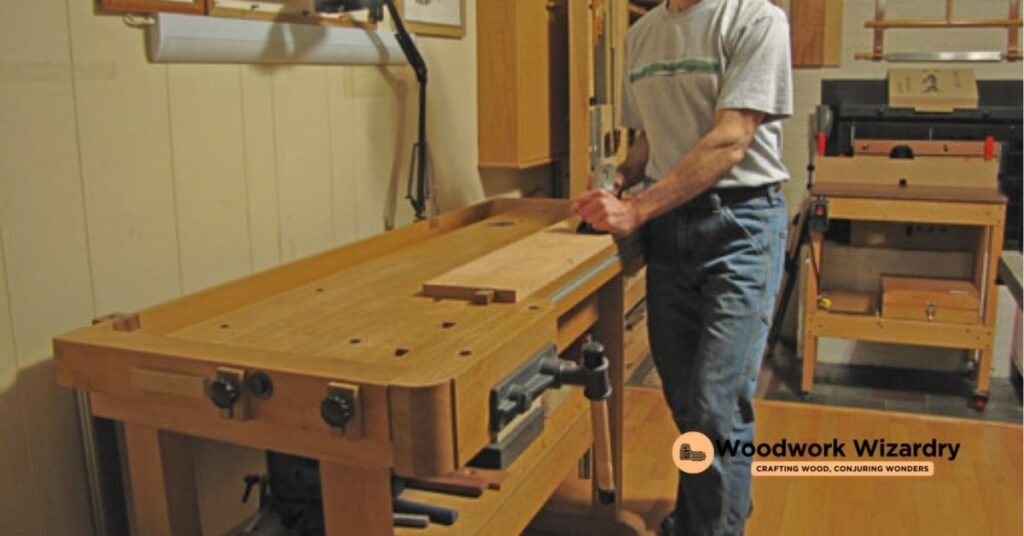
Customizing your workbench height ensures comfort and efficiency in woodworking projects. By accurately measuring and adjusting the height, you can create a workspace customized to your tasks and ergonomic needs.
Tools Needed For Measurement
Certain tools simplify the process of measuring workbench height. A tape measure helps determine both your body height and the current bench height. A level ensures proper alignment when modifying the bench. Adjustable sawhorses provide temporary support while making changes. A pencil or marker is useful for marking measurements on your workbench.
Additional tools like clamps or an adjustable workbench can assist in fine-tuning. If modifications require cutting or adding material, a saw and wood screws are beneficial. Having these tools on hand streamlines the entire customization process.
Step-By-Step Customization Guide
Begin by measuring the distance between the floor and your hip joint to identify a comfortable base height. Stand upright on a flat surface and use the tape measure for accuracy. For general woodworking tasks, aim for 34 to 36 inches, as it aligns with most hip levels.
Evaluate exact tasks to determine adjustments. For detailed work like carving, increase the height to 38 or 39 inches to bring the project closer to your eye level. For heavy-duty work, reduce the height to 30 or 32 inches, allowing more leverage and reducing strain.
Mark the desired height on your workbench using a pencil. Cut the legs to match your measurement if decreasing the height. Add woodblocks or adjustable leg extenders if increasing the height. Use a level to confirm the bench’s stability after modification.
Test the new height by simulating your regular woodworking tasks. Make incremental adjustments if necessary for optimal comfort and efficiency during use. Always prioritize proper ergonomic alignment to prevent fatigue and strain.
Tips For Maintaining A Comfortable Workbench Setup
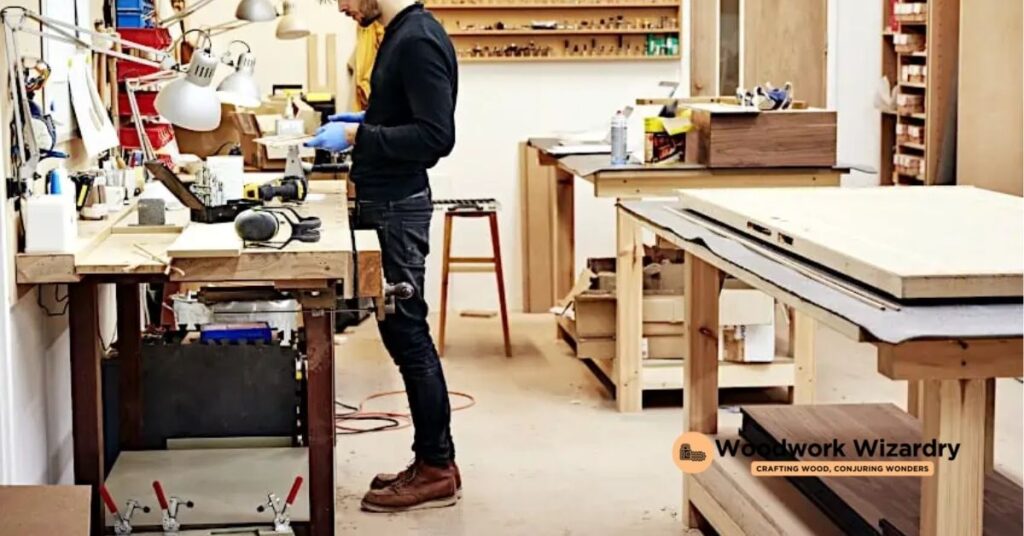
A well-maintained workbench setup ensures both long-term comfort and productivity. Attention to ergonomic details enhances focus and reduces physical strain during woodworking tasks.
Using Anti Fatigue Mats
Placing anti fatigue mats around your workbench minimizes the impact of standing for extended periods. These mats relieve pressure on your feet, knees, and lower back, supporting better posture. Choose mats with sufficient cushioning and durability to suit the intensity of woodworking tasks. Proper placement depends on your movement patterns; ensure mats are positioned where you stand most often, such as near tool access points or task zones.
Regularly Checking Adjustments
Frequent adjustments to your workbench ensure consistent ergonomic support and alignment. Confirm that its height suits current tasks, whether performing detailed carving or handling heavy materials. Consider changes in tools or workflow when reevaluating the setup. Inspect screws, joints, and support brackets to prevent instability or uneven surfaces that might disrupt your work. Make fine-tuning a regular habit to keep your workstation customized to your exact preferences.
Conclusion
Choosing the right workbench height is a game-changer for your woodworking experience. By tailoring the height to your tasks and body, you’ll boost efficiency, reduce strain, and create a more comfortable workspace. Don’t overlook the importance of regular adjustments and maintenance to keep your setup ergonomic and effective.
With the right height and a well-thought-out workstation, you’ll not only enhance your craftsmanship but also protect your health in the long run. Take the time to customize your workbench—it’s an investment in both your projects and your well-being.

